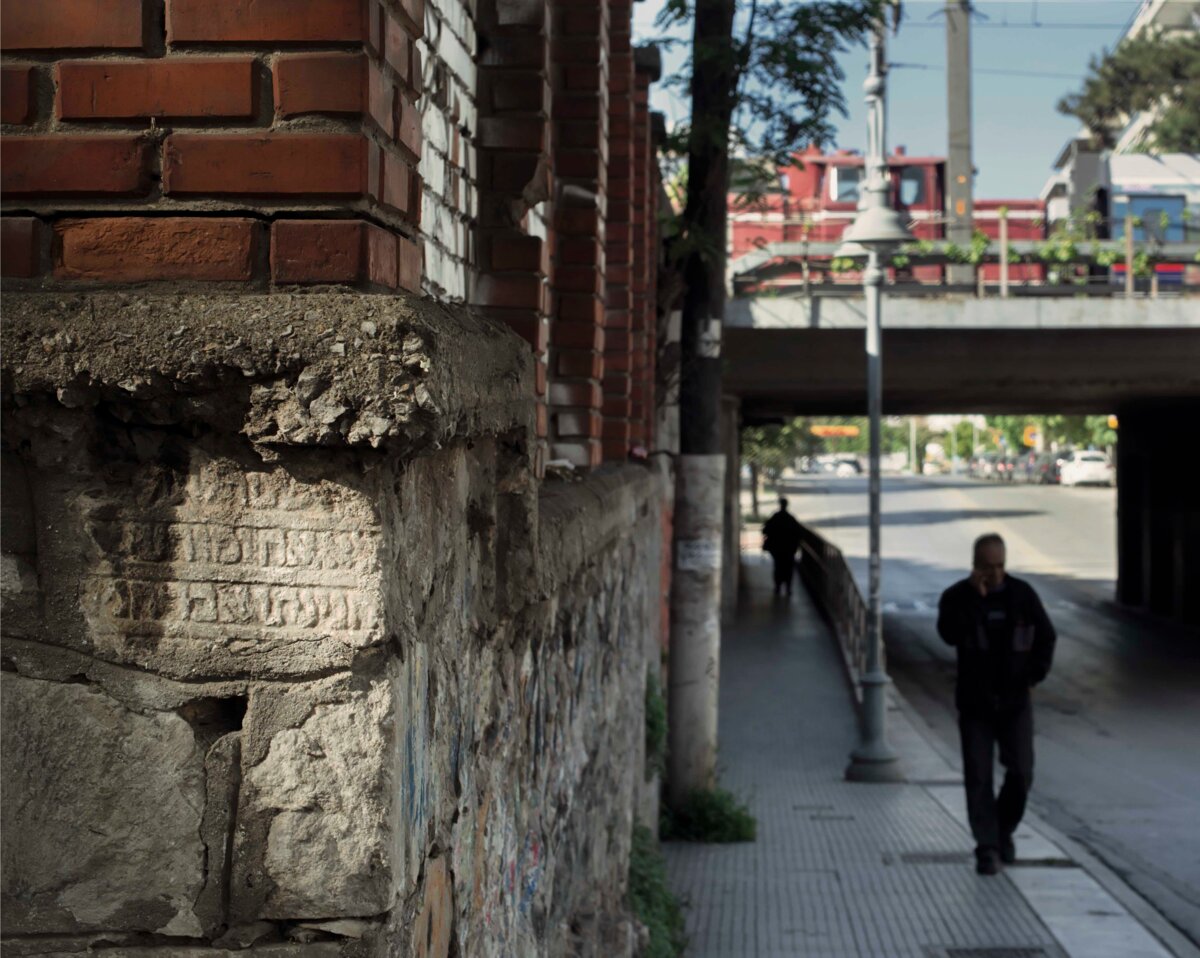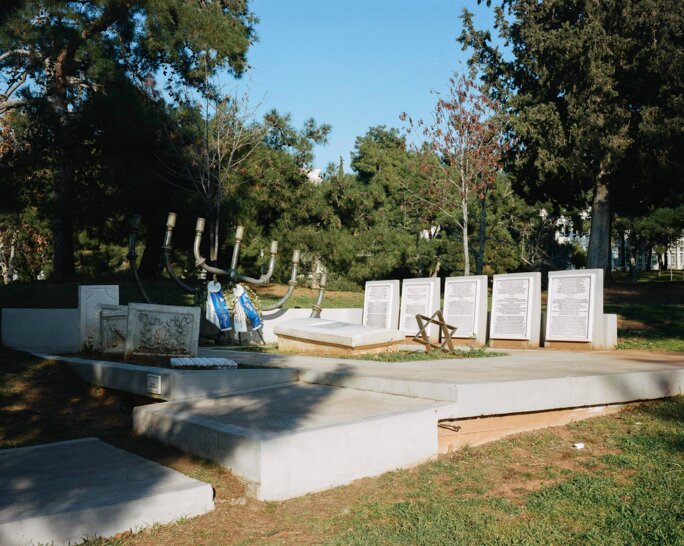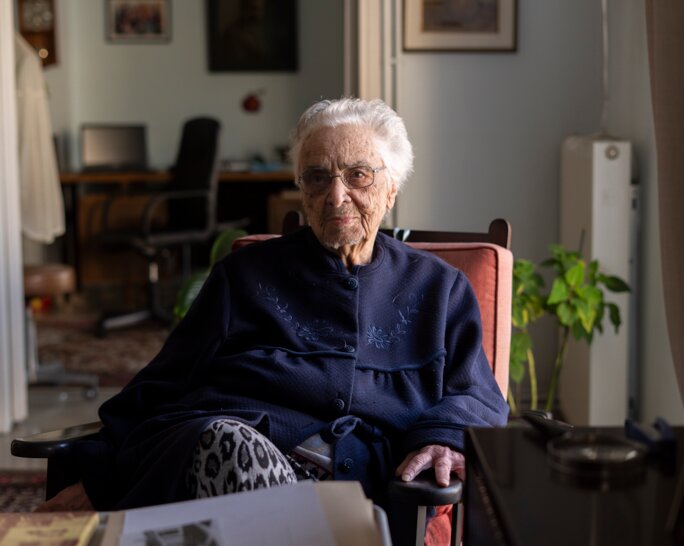When Paris-based photographer Martin Barzilai set off on a journey to trace the history of his family on his father’s side, he had little visual evidence to help him, except for a few photos dating from the 1920s. These were taken in the photographic studio of his great-great-uncles in the Greek port city of Thessaloniki.
At the time those photos were taken, the population of Thessaloniki, which is situated in the north-west corner of the Aegean Sea, was largely composed of three major communities; Greek Orthodox, Jewish, and Muslim. Thessaloniki had been ruled by the Ottoman Empire until the first Balkans War, when it fell to Greece in 1912. The makeup of the city’s inhabitants changed in a population ‘exchange’ after the Turkish victory in its 1919-1922 war with Greece. That was when many ethnic Greeks arrived from Turkey, and ethnic Turks left. In this polyglot city, Greek intermingled with Turkish, Judaeo-Spanish, French and Bulgarian.
Among the old family photos Martin Barzilai had in his possession was one taken in 1926. On it was his great-great-uncle kneeling beside the tomb of his sister in a Thessaloniki cemetery. On the tomb were two inscriptions, one in Hebrew the other in French.
Barzilai would discover that the resting place of his great-great-aunt no longer exists, as neither does Thessaloniki’s vast Jewish cemetery of 36 hectares which, before World War II, was the largest Jewish necropolis in Europe (it is estimated to have contained some 300,000 tombs).
In 1941, Germany invaded Greece and took control of Thessaloniki and its surrounding region (excepting Athens, the rest of the country was divided up among the Axis Powers), and the destruction of the cemetery, dating back several hundred years, was ordered in 1942 by the city’s collaborationist municipal authorities.
The living also disappeared: after the Jews of Thessaloniki had been forced into two ghettos, around 45,000 of them – representing about 95 percent of the city’s Jewish population – were rounded up, beginning in March 1943, and deported to German death camps in 19 railway convoys. Most were sent to Auschwitz-Birkenau. What had been the largest Jewish community in Greece – Thessaloniki was once dubbed as ‘the Jerusalem of the Balkans’ – was all but wiped out.
But the tombstones of the razed Jewish cemetery did not entirely disappear: many had been broken up and used for construction work, by the Germans and also the Greeks, and the 1950s, a sports stadium was built on part of the site of the cemetery, as were also new buildings for the Aristotle University of Thessaloniki. No public sign or monument was erected to indicate what lay beneath.

Enlargement : Illustration 1

Martin Barzilai made his first of several trips to the city in 2018 Alongside his personal investigation into his family’s history, Martin Barzilai went looking for, and photographing, the lost tombstones.
Multiple questions were on his mind. He wanted to find out what the city’s Jewish quarter had looked like 100 years ago, where exactly his great-great-grandparents and his grandfather lived before their decision to emigrate to Paris in the 1920s. and in what circumstances the rest of his family, who had remained in Thessaloniki, were deported to the German death camps in 1943. His quest was a huge challenge, for how would he be able to find the traces of this family history when none apparently existed anymore?
The story of what he found was published in France last October in an illustrated book entitled Cimetière fantôme : Thessalonique (Phantom cemetery: Thessaloniki). Along with photos of the fragments of tombstones used for building work around the city and portraits of the several people who have campaigned to prevent the events of the 1941-1944 German occupation from becoming forgotten. Unravelling as a sort of log book of his investigations, this pioneering work is enriched and contextualised by the contributions of two historians, Annette Becker, emeritus professor at Paris-Nanterre university, and Kateřina Králová, director of the Research Centre for Memory Studies at Charles University in Prague.
It was only in 2004 that mention of the Shoah appeared in Greek school programmes.
In Greece, no study of the events of the wartime occupation of Thessaloniki has ever been published, and within the city there is little physical commemoration of the disappearance of most of the Jewish population, unlike those that can be found in central European countries and, in particular, Poland.
Until 2004, when teaching of the history of the Shoah became compulsory, lessons in Greek schools contained little mention of the Greek Jewish victims of World War II. That story is placed on the sidelines of the narrative of the country’s history, which focusses on the national wartime resistance movement, the fight for independence from the Ottoman Empire (finally won in 1829), the massacres and expulsion of the Greek populations of Asia Minor in the 1919-1922 Greek-Turkish war, and the period of Ancient Greece.
“It was only in 2004 that mention of the Shoah appeared in the Greek school programmes, as if it did not concern the country, which still refuses financial reparations to the few survivors or their descendants living in Greece or elsewhere,” writes historian Annette Becker in the introduction to the book. “The centuries-long existence of Jews in the country, and the Shoah, are thus made invisible and denied.”
While the Greek academic world has begun to interest itself in the story of the Jews of Thessaloniki, the first significant research into the subject was largely published in English, and notably the 2005 book Salonica, City of Ghosts by the British historian Mark Mazower.

Enlargement : Illustration 2

Martin Barzilai’s book also recounts how the efforts to record and commemorate the events in Thessaloniki are recent. It was only in 2014 that the then mayor of the city, Yanis Boutaris, inaugurated a memorial on the campus of the Aristotle University to the cemetery that once, and over centuries, lay under the site, and in 2017, a project to create a museum of the Holocaust was launched (the existing Jewish Museum of Thessaloniki, opened in 2001, was notably small). Meanwhile, no signs exist at the former sites of synagogues, nor that of the wartime ghettos, nor the building that served as the Gestapo’s headquarters.
Barzilai met up with several people in the city who have worked to keep the memory alive. One of them, a pharmacist, had been recording the places where the Jewish tombstones have been used as construction slabs, and he guided the photographer to many. These include the low wall of a house that was entirely built with Jewish tombstones, stairs where the steps reveal Hebrew inscriptions on them, and bits of the tombstones found in the basement of a hospital. Barzilai photographed and mapped them, and the book contains a cartography of where they can be found.
In Navarinou Square, in the city centre, the photographer found a piece of tombstone cemented into a low-slung wall behind a parking place for motorbikes.

Enlargement : Illustration 3

Explaining the scene (photo above), Barzilai writes: “Nothing was going on, until a young man came walking his dog, a Pitbull, just behind the low wall where the stones are. I hear high-pitched barks behind me. It was a small, furry dog who was calling the Pitbull. They ended up sniffing each other in front of me. I took photos with the stone and the two dogs playing around it.”
Searching for the last witnesses who could tell him something of the period when the Jewish population of Thessalonica (which some still call Salonica, after the Ottoman name for the city) disappeared, Barzilai came across Anna Theophylaktou, who studied medicine in the city in the early 1940s. She eventually became an ophthalmologist. Approaching 100 years-old, she recalled using Jewish tombstones as slabs to work on when a student.
“I remember that we students of medicine transported the tombstones from the cemetery and that we used them as dissection tables,” she told him. “We built all the anatomy service with our own hands. It was in 1943. There was a zone filled with [tomb] stones. And we took everything we needed.” Theophylaktou died shortly before the book was published.

Enlargement : Illustration 4

Barzilai questions why there has been such silence in Greece over the history of the country’s Jews. He recounts a discussion with a young woman in Thessaloniki, who suggested that the reason is a feeling of guilt. That is a sentiment that may be shared by some locally from the powerful Greek Orthodox Church, which used stones from the Thessaloniki cemetery to repair its churches after the war, including the Basilica of Hagios Demetrios (Saint Demetrius, patron saint of Thessaloniki) and which is today listed on UNESCO’s World heritage list.
Historians estimate that only around 5,000 Jews today live in Greece, and less than 1,000 remain in Thessaloniki, where, at the turn of the 20th century, more than 60,000 lived. According to several polls caried out over recent years, anti-Semitic sentiment among the Greek population is one of the most prevalent among European countries.
In December 2022, the memorial to the Jewish cemetery inaugurated in 2014 on the campus of Thessaloniki’s Aristotle University was desecrated for the fourth time, with a daubed Swastika and fascist symbol. Several days later, in January 2023, a mural in memory of the city’s Jews deported to German death camps was similarly vandalized.
-------------------------
- The original French version of this article can be found here.
English version by Graham Tearse


